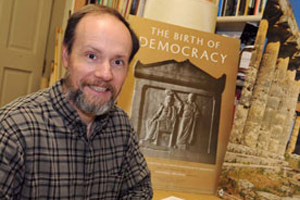What you should know: Theatre


Communication and community.
Science demolished the myth that mind and body (or intellect and emotion) can be separated. What’s more, we’ve learned that the human brain is wired to be receptive to stories, both as a method of learning and as a way of remembering. Theatre is a unique communication medium that presents stories in a way that engages both the intellect and the emotions of its audience, often simultaneously. Theatre requires an audience to assemble in real time and serve as a sort of resonating chamber for its messages, creating a sense of community. This special form of communal communication is highly effective in challenging and stimulating its audiences, even as it entertains.
 Dramatic literature.
Dramatic literature.
Starting with the ancient Greeks and continuing to the present, texts created as platforms for theatrical performance have found their place among the most impressive of human creative accomplishments. Aristotle noted several millennia ago that the way in which drama combined ideas, poetry, action, spectacle, and character resulted in an especially laudable form of expression. The study of great plays is a way of thinking about the great questions—and appreciating all the insight, aspiration, and passionate engagement that comes with addressing them.
 Acting as exploration.
Acting as exploration.
When acting is undertaken with seriousness and integrity, it is a rigorous process that combines a bewildering blend of skills and techniques, including the capacity for careful textual and critical analysis, a daunting combination of physical skills as the actor trains his voice and body as an instrument flexible enough to deploy in wildly different styles and circumstances, the courage to use his own emotional life as the material of investigation, and enough creativity to make the interpretive choices that render a particular performance distinctive.
 Design and the shaping of worlds.
Design and the shaping of worlds.
The designer (a designation that includes the artists responsible for the scenic environment in which the action unfolds, the light that shapes the audience’s perception of that action, the costumes that reveal character and propel the story, and the sound that provides environmental detail and colors the audience’s emotional responses) is a conjurer, literally using the script as a springboard to make the play intelligible to all our senses. But like all art, theatre design does much more than represent. It uses metaphor and a complex web of perceptual associations to add depth and nuance to the work of the playwright and the actor.
 The classroom as well as the studio.
The classroom as well as the studio.
Theatre and performance studies have a significant dimension that is more scholarly than artistic, though both dimensions are intensely academic. Theatre students must study the history of their art form. That history is a study of civilization, with all the attention to the ideas, conflicts, achievements, and innovations that mark development and evolution—or perhaps just change. But theatre and performance studies has also taken on the task of investigating human behavior through the lens of performance, and academic work in this area borrows heavily from a number of disciplines.



